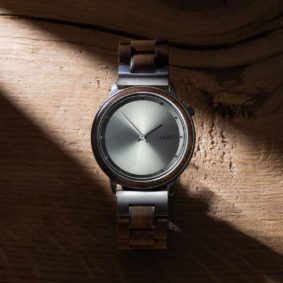Articles
QUARTZ VS AUTOMATIC WATCH – What’s the difference?
When talking about watches, the terms “quartz movement” and “automatic movement” often come up. What do these terms really mean? How is a quartz movement different from an automatic movement?
Different movements
The watch movements can be divided into two main categories; battery-operated quartz movements and mechanical movements. In addition, mechanical movements are typically divided into two subcategories; manual movements and automatic movements.
Mechanical movement
The history of mechanical movement goes back to the 16th century. The functioning of a mechanical movement is based on the stored running energy in a mainspring inside the movement. The mainspring is tuned either manually by rotating it or automatically by means of a pendulum of the movement. The energy transferred from the release of the tension of the mainspring causes the movement of the pointers. There is no electronics in the mechanical movement at all.
The buyer of a mechanical watch should understand the qualities of this fine and traditional product. First off, a mechanical watch is not as accurate as a battery-powered watch. A mechanical watch is often more sensitive to interference than quartz movement. Maintenance-wise, automatic watches only need a once-in-a-lifetime mainspring replacement. They are preferred by watch enthusiasts as they tend to last from father to son. For these reasons, watch enthusiasts prefer mechanical movements in their watches.
Manual movement
The first movements of the watches have all been manual. In practice, this means that “power” can be charged to the movement by turning the crown manually, whereby the mainspring of the movement is tuned. The mechanical movement contains a lot of fine mechanics and is still a valued movement in watches.
Automatic movement
The development of mechanical movement has brought an addition of the internal rotor of the movement. The rotor can rotate freely as the hand moves and at the same time automatically energizes the spring of the movement. This is why this movement is called automatic.
Today, basically all mechanical movements are automatic. This means that the user of the watch does not need to tune his watch in daily use.
Depending on the model, both manually tuned mechanical and automatic mechanisms can hold charge for 30-90 hours. This means the time the watch runs on the table without being moved. When you move the watch, it starts running normally again.

Automatic movement in Aarni Manse Limited Edition Watch.
Battery operated quartz movement (Quartz)
Quartz movement has become the most popular movement in past decades because they are accurate, maintenance-free and inexpensive. The battery is the main source of electrical energy in the electronic circuit inside the watch. The produced energy, together with the help of the quartz crystal, powers the stepping motor.
How does the quartz movement work?
The power of the battery is conducted through a quartz crystal in the movement. The power causes the quartz crystal to oscillate at an exact frequency up to 32,768 times per second. This vibration makes the pointers of the watch move accurately.
Quartz movements are very accurate. A good quartz movement stays on time with a precision of seconds on a monthly basis, where even a more expensive automatic movement can change several minutes a month.
Quartz movements are maintenance-free. Only battery replacement will be relevant every 2-8 years.
Differences between automatic movement and quartz movement in a nutshell
Quartz movement
- An affordable option
- Accurate and reliable
- Maintenance-free except for battery replacement
Automatic movement
- Prestigious movement with fine mechanics
- Lasts well maintained from father to son
- Maintenance is recommended every 4-7 years
- The “sliding” movement of the automatic is a great detail
At Aarni, we use both quartz movement and automatic movement. You can find out more about the movements we use here.






